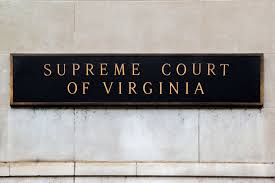Every attorney who does any significant trial work—and many clients beside them—recognize even in the middle of trial when a ruling has gone against them and their case will not recover. It’s a disheartening realization, but not one that necessarily means defeat. In Virginia, every litigant has a right to appeal to the Court of Appeals of Virginia (most criminal, workers’ compensation, and domestic relations cases) or the Supreme Court of Virginia (most every other kind of case).
What many attorneys or litigants don’t always grasp, though, is that getting that mid-trial ruling reversed on appeal requires action now to properly “preserve” the error so that an appellate court can later examine and reverse it. Here are the basic steps that need immediate attention while the trial is still happening:
- Object in a timely fashion—the attorney needs to object to a question before it is answered or to an action before the court takes it.
- Explain the objection with enough specificity that the other side can intelligently argue against it—or the appellate courts will deem you to have waived it.
- Insist that the court rule on your objection. Too often judges angrily stare down an attorney who tries to not turn the court against the client. But getting a ruling is an absolute necessity.
- Get a ruling on each ground you argue. If there are multiple rules of court or statutes that mandate something, you need a separate ruling for each one.
- Do not use the phrase “just for the record” when objecting—or you risk an appellate court deeming you to have waived or abandoned the objection.
- If the objection concerns evidence you think should be introduced, demand that the court permit you to make a “proffer” of it—essentially, orally telling the court what the evidence would have been had it let the evidence come in.
- Depending on the circumstances, and if it’s a jury trial, consider whether an objection calls more attention to an error and—if it does—whether a mistrial (restarting the whole trial process all over again) or a curative instruction (an extra instruction to the jury) will be enough to fix the problem.
What if one of these steps didn’t happen? All may not be lost still. After the trial, it is frequently a good idea to file a post-trial motion reconsider a ruling. A good post-trial motion can lay out an error in more detail and provide authorities that will help an unhurried and unpressured judge see an error and act to remedy it. Post-trial motions also have the added advantage of setting up the petition for appeal you may need to file if the court refuses to change its mind—saving time and money when the period to note and perfect an appeal is limited.
The attorneys at Winslow & McCurry have experience in handling hundreds of appeals and situations involving post-trial motions, and—what is better—post-trial motion work is litigation help we can lend any Virginia attorney by remotely doing the research and writing. If you or someone you care for has suffered an adverse ruling at trial, and might benefit from the extra look at a trial error that a fresh set of eyes can lend, call the attorneys at Winslow & McCurry for a consultation at 804-423-1382 or info@wmmlegal.com and we can help!
